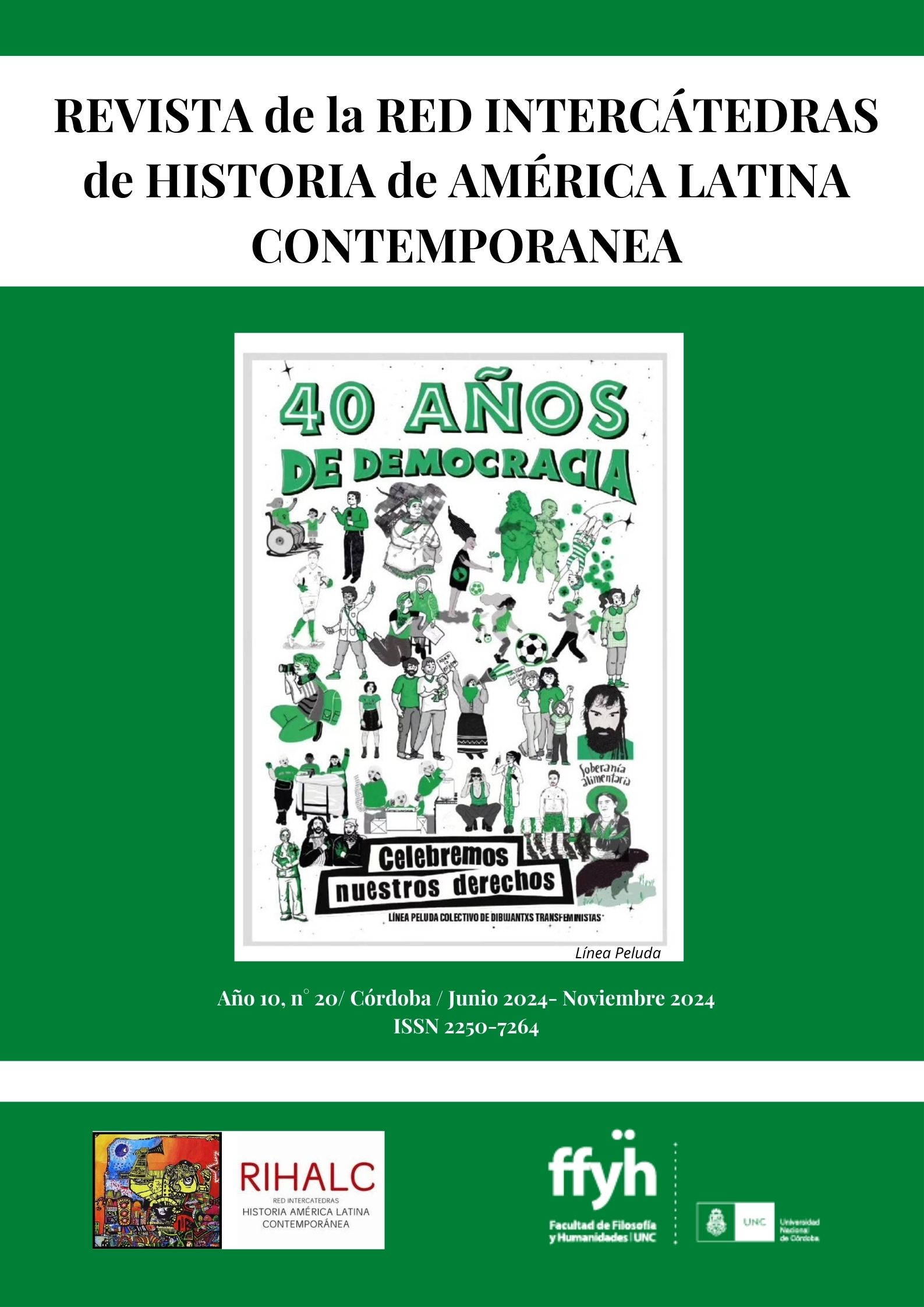Once upon a time Havana: modern, bourgeois, cosmopolitan and exclusive. Havana's bourgeois elite and the urbanization of its social spaces (1940-1958)
Keywords:
Bourgeois city, Elite of the Havana bourgeoisie, Social spaces, UrbanizationAbstract
The Havana city of the 40's and 50's continued to expand on bases that boosted the westward expansion by Mariano and had the bourgeois housing as one of the most characteristic elements. With this study we intend to analyze the space as one of the fundamental keys in the conformation of the urban structures of the social classes from real estate and constructive alternatives whose purpose lay in the administration of the territory and the establishment of limits within which the conspicuous elements of the Havana elite developed their strategies of organization and articulation of the territory and their logics of action-exclusion. In this exercise, they implement resource distribution patterns that enable them and their representatives to act as organizing agents and guarantors of the city's unequal development, trying to produce the physical space in such a way as to order inhabitation. The Havana elite would distribute, assign and approve the appropriate places for each subject to fulfill highly hierarchical and stratified social functions, guaranteeing their own preeminence. This elite practiced and/or enjoyed a lifestyle and customs that privileged privacy and homogeneity within the group. In the city built by and for the Havana bourgeoisie, divisions were established that translated into spatial differences that became visible as a matter of access to power in the different spheres of social, political, cultural and economic life.
References
Álvarez Gómez, Ángel Manuel (S/F): “De cuando la retícula ortogonal era considerada ineficaz y aburrida” en Planificación Física-Cuba, La Habana, 11-22 [En línea], consultado el 20 de noviembre de 2023, disponible en https://www.inotu.gob.cu
Álvarez-Tabío Albo, Emma (2000): Invención de La Habana, Editorial Casiopea, Barcelona.
Batista, Eugenio (2001): “La casa cubana”, Arquitectura y Urbanismo, Vol. XXII, N° 3, pp. 68-71.
Barthes, Roland (1993): La aventura semiológica, Editorial Paidós, Madrid/Buenos Aires.
Bosch, Juan (2009): Cuba, la isla fascinante, Fundación Juan Bosch/H. Cámara de Diputados, México.
Bourdieu, Pierre (2000): “¿Cómo se hace una clase social? Sobre la existencia teórica y práctica de los grupos” en Poder, derecho y clases sociales, Desclée de Brouwer, Bilbao.
Cárdenas, Eliana (2018): Historiografía e identidad en la arquitectura cubana, Instituto Universitario de Urbanística, Valladolid.
Collazo Pérez, Enrique (1989): Cuba. Banca y Crédito. 1950-1958, Editorial de Ciencias Sociales, La Habana.
Chateloin, Felicia (2016): “Miramar cumple 100 años”, en Centenario de Miramar: Reparto habanero, Ediciones Boloña, La Habana, pp. 17-80.
de las Cuevas Toraya, Juan Francisco (2019): El Malecón habanero: un ícono de la capital, Ediciones Cubanas, La Habana.
del Toro González, Carlos (2011): La alta burguesía cubana 1920-1958, Editorial de Ciencias Sociales, La Habana.
Funes, María Soledad (2012): “El significado de la preposición `de`: un enfoque cognitivo-prototípico”, Boletín de Filología, Vol. 47, N° 1, pp. 111-135.
García Álvarez, Alejandro (1990): La gran burguesía comercial en Cuba (1898-1920), Editorial de Ciencias Sociales, La Habana.
Gavira Golpe, Carmen (1976): “Historia de un proceso de urbanización: Cuba”, en Ciudad y Territorio. Estudios Territoriales, N° 27, 63-72.
Ibarra Cuesta, Jorge (1995): Cuba 1898-1958. Estructuras y procesos sociales, Editorial de Ciencias Sociales, La Habana.
Lefebvre, Henri (2013): La producción del espacio, Capitán Swing Libros, S.L., Madrid.
Le Riverend, Julio (1992): La Habana, espacio y vida, Editorial MAPFRE, Madrid.
López Rangel, Rafael (2024, 20 de marzo): Galería de imágenes primera modernidad urbano-arquitectónica La Habana, Cuba [En línea], consultado el 20 de noviembre de 2023, disponible en http://www.rafaellopezrangel.com/galeria20%habana.htm.
Lotman, Iuri Mijailovich (2004): “Símbolos de Petersburgo y problemas de semiótica urbana”, Entretextos. Revista Electrónica Semestral de Estudios Semióticos, N° 4, pp. 1-27.
Mills, Charles Wright (1960): La élite del poder. Política de los altos círculos norteamericanos, Fondo de Cultura Económica, México.
Núñez Vega, Jorge (2015): La Danza de los millones. Cambio cultural y modernización en La Habana (1915-1920), Ediciones Imagen Contemporánea, La Habana.
Otero Naranjo, Concepción (2017): El Vedado: historia de un reparto habanero, Editorial UH, La Habana.
Pavez Ojeda, Jorge (2003): El Vedado. 1850-1940. De Monte a Reparto, Centro de Investigación y Desarrollo de la Cultura Juan Marinello, La Habana.
Pérez Casabona, Hassan (2020, 30 de junio): “Juan Bosch y la intelectualidad cubana” La Jiribilla. Revista de Cultura Cubana [En línea], consultado el 20 de noviembre de 2023, disponible en http://www.lajiribilla.cu
Pérez Villanueva, Omar Everleny (1987): Serie de estudios de estructura económica de Cuba. Construcciones, CIEI, UH, La Habana.
Ponce Herrero, Gabino (2007a): “La ‘ciudad moderna’ en La Habana”, Investigaciones Geográficas, N° 44, pp. 129-146.
Ponce Herrero, Gabino (2007b): “Planes de Reforma Urbana para La Habana: la modernización de la ciudad burguesa (1898-1959)”, Boletín de la A. G. E., N° 45, pp. 327-352.
República de Cuba (2007): Los censos de población y viviendas en Cuba: censos del período 1907-1953, Oficina Nacional de Estadísticas, La Habana.
Santos, Milton (1990): Por una geografía nueva, Espasa-Calpe, Madrid.
Schnell, Izhak (2002): “Segregation in everday life spaces: A conceptual model”, en Wim Ostendorf y Izhak Schnell (eds.), Studies in Segregation and Disgregation, Ashgate, Hampshire, pp. 39-66.
Segre, Roberto (2015): Arquitectura y Urbanismo. Cuba y América Latina desde el Siglo XXI, Editorial Arte y Literatura, La Habana.
Thomas, Hugh (1982): Historia contemporánea de Cuba, Editorial Grijalbo, Barcelona.
Zardoya Loureda, María Victoria (2004): “La Habana del oeste”, Planificación Física-Cuba, pp. 33-39.
Downloads
Published
Issue
Section
License

This work is licensed under a Creative Commons Attribution-NonCommercial-NoDerivatives 4.0 International License.
Aquellos autores/as que tengan publicaciones con esta revista, aceptan los términos siguientes:
- Los autores/as conservarán sus derechos de autor y garantizarán a la revista el derecho de primera publicación de su obra, el cuál estará simultáneamente sujeto a la Licencia de reconocimiento de Creative Commons que permite la libre distribución con mención de su(s) creadores, no permite el uso comercial ni las obras derivadas. Los autores, al enviar el artículo, acuerdan publicarlo bajo esta licencia..
- Los autores/as podrán adoptar otros acuerdos de licencia no exclusiva de distribución de la versión de la obra publicada (p. ej.: depositarla en un archivo telemático institucional o publicarla en un volumen monográfico) siempre que se indique la publicación inicial en esta revista.
- Se permite y recomienda a los autores/as difundir su obra a través de Internet (p. ej.: en archivos telemáticos institucionales o en su página web) después del proceso de publicación.



